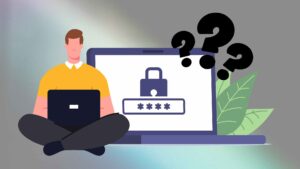

In today’s interconnected digital world, protecting your online accounts is crucial to safeguarding your personal information and preventing unauthorized access. The first line of defense against cyber threats is often your password, which serves as the key that unlocks your digital identity. Unfortunately, many individuals underestimate the importance of choosing strong and secure passwords, leaving their accounts vulnerable to attack.
Consequences of Weak Passwords
Choosing weak or easily guessable passwords can have severe consequences. If an attacker gains access to your passwords, they could:
-
Access your personal data: This includes sensitive information such as emails, financial records, and social media accounts.
-
Alter or destroy your files: They could modify or delete important documents, photos, or other personal files.
-
Take over your account or device: They could gain control of your email accounts, social media profiles, or even your entire computer system.
-
Perform illegal activities in your name: They could use your stolen identity to commit fraud, spread malware, or engage in other criminal activities.
Creating Strong and Secure Passwords
To protect your online accounts and prevent unauthorized access, follow these guidelines when creating your passwords:
-
Length: The longer your password, the more difficult it is to crack using brute-force methods. Aim for a minimum of 12 characters, including a combination of upper and lowercase letters, numbers, and symbols.
-
Variety: Avoid using easily identifiable patterns or common words. Instead, incorporate a mix of characters, symbols, and numbers to make your password less predictable.
-
Uniqueness: Never reuse passwords across different accounts. If an attacker compromises one password, they could potentially gain access to all your accounts using the same credentials.
-
Avoid personal information: Steer clear of using personal details such as your name, birthday, address, or phone number in your passwords.
-
Regularly update: Change your passwords periodically, especially for critical accounts like email and banking.
-
Use a password generator: If you find it challenging to create strong passwords on your own, consider using a reputable password generator tool.
Example of a Strong Password
A strong password might look like this:
4(&V_x5%K?=mK3D
Remember, a strong password is essential for safeguarding your online identity and preventing unauthorized access to your personal information. By following the guidelines provided, you can create secure passwords that protect your digital life.
Additional Tips
-
Utilize password generators to create strong and secure passwords.
-
Change your passwords regularly, especially for sensitive accounts like email and banking.
-
Avoid writing down your passwords or storing them in easily accessible locations.
-
Be cautious when clicking on links or opening attachments from unknown senders. These may contain malware designed to steal your passwords.
Conclusion
By adhering to these guidelines and adopting secure password practices, you can significantly enhance your online security and safeguard your personal information. Remember, a strong password is the first line of defense against unauthorized access and data breaches.
